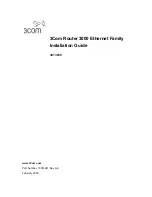
37
Configuring the DHCP server
Overview
The DHCP server is well suited to networks where:
•
Manual configuration and centralized management are difficult to implement.
•
IP addresses are limited. For example, an ISP limits the number of concurrent online users, and
users must acquire IP addresses dynamically.
•
Most hosts do not need fixed IP addresses.
An MCE acting as the DHCP server can assign IP addresses not only to clients on public networks,
but also to clients on private networks. The IP address ranges of public and private networks or those
of private networks on the DHCP server cannot overlap. For more information about MCE, see
MPLS Configuration Guide
.
DHCP address pool
Each DHCP address pool has a group of assignable IP addresses and network configuration
parameters. The DHCP server selects IP addresses and other parameters from the address pool
and assigns them to the DHCP clients.
Address assignment mechanisms
Configure the following address assignment mechanisms as needed:
•
Static address allocation
—Manually bind the MAC address or ID of a client to an IP address
in a DHCP address pool. When the client requests an IP address, the DHCP server assigns the
IP address in the static binding to the client.
•
Dynamic address allocation
—Specify IP address ranges in a DHCP address pool. Upon
receiving a DHCP request, the DHCP server dynamically selects an IP address from the
matching IP address range in the address pool.
You can specify IP address ranges in an address pool by using either of the following methods:
•
Method
1
—Specify a primary subnet in an address pool and divide the subnet into multiple
address ranges. These address ranges include a common IP address range and IP address
ranges for DHCP user classes.
Upon receiving a DHCP request, the DHCP server finds a user class matching the client and
selects an IP address in the address range of the user class for the client. A user class can
include multiple matching rules, and a client matches the user class as long as it matches any of
the rules. In address pool view, you can specify different address ranges for different user
classes.
The DHCP server selects an IP address for a client by performing the following steps:
a.
DHCP server compares the client against DHCP user classes in the order they are
configured.
b.
If the client matches a user class, the DHCP server selects an IP address from the address
range of the user class.
c.
If the matching user class has no assignable addresses, the DHCP server compares the
client against the next user class. If all the matching user classes have no assignable
addresses, the DHCP server selects an IP address from the common address range.
d.
If the DHCP client does not match any DHCP user class, the DHCP server selects an
address in the IP address range specified by the
address range
command. If the address
range has no assignable IP addresses or it is not configured, the address allocation fails.
















































